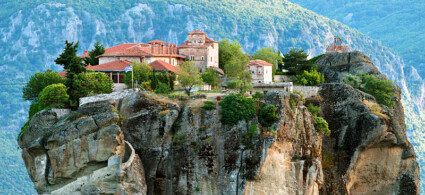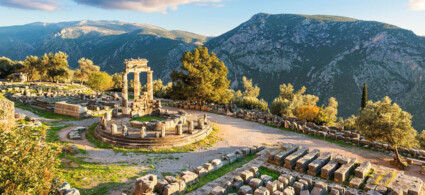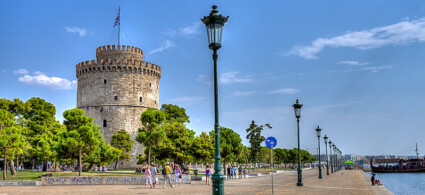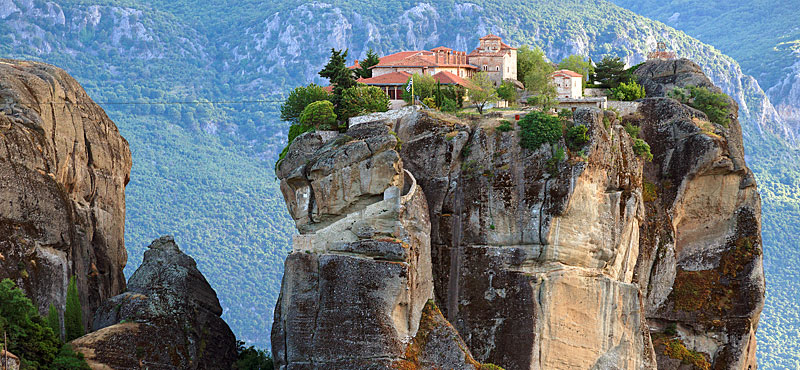

Vacationing in Greece has for decades been synonymous with a trip to Athens or a stay on the islands. But, perhaps tired of island hopping or simply eager to learn more about a country and culture that have much in common with us, European tourists are showing more and more interest in mainland Greece.
It is a large and extremely varied territory, with an irregular shape that can be summarily described as a central body with a three-fingered offshoot to the north (the Chalkidiki Peninsula) and a three-pointed appendage to the south (the Peloponnese).
Mainland Greece is undoubtedly the top destination for those who are irresistibly attracted by ancient ruins: Athens, Olympia, Mycenae, Sparta, Delphi and other symbolic places of Greek classicism are located on the mainland, as well as splendid museums, amphitheaters and shrines less known but of great charm.
Mainland Greece is also a valid alternative to the islands for those who want to have a sea vacation: its jagged coastline hides inlets and dream beaches bathed by clear blue waters. From north to south, along the east coast and along the west coast, you are sure to find everything you expect to find in the islands: beautiful sea, dream beaches, good food, warm hospitality.
Mountains are not usually associated with Greece, but it would be a good idea to start thinking about it… the mountains in northern Greece, as well as the Peloponnese, are ideal destinations for relaxing vacations in the green, away from the hustle and bustle of modernity.
And then there are the monasteries of Meteora, shopping in Thessaloniki, the Pelos train, the multicultural cities of Thrace… in mainland Greece there is something for everyone, from lovers of comfortable tourism to adventurous travelers in search of unusual destinations.
The important thing is to know where to go, and for this there is our mini-guide to mainland Greece: divided into regions and macro-areas, contains the most beautiful places for each area. Choosing where to go this year in Greece will be easy!

Attica is the southern region of Greece that includes the country’s capital in its territory. In an obvious way, Athens is the tourist star of the region: famous all over the world for its splendid Acropolis dominated by the Parthenon, the symbol of classicism, is a fascinating metropolis that pulses with energy. An ideal destination for a fantastic two- or three-day stay… you’ll certainly want to stay longer!
Athens is also the starting point for a vacation in the Greek islands. From Piraeus, the main port of Greece, ferries depart to reach both the famous islands and those lesser known and without an airport.
The rest of the region always remains out of the international tourist circuits while attracting a strong local tourism. In the summer months many seaside resorts of Attica, in particular those of the Coast of Apollo, are literally taken by storm by the Athenians, especially on weekends.
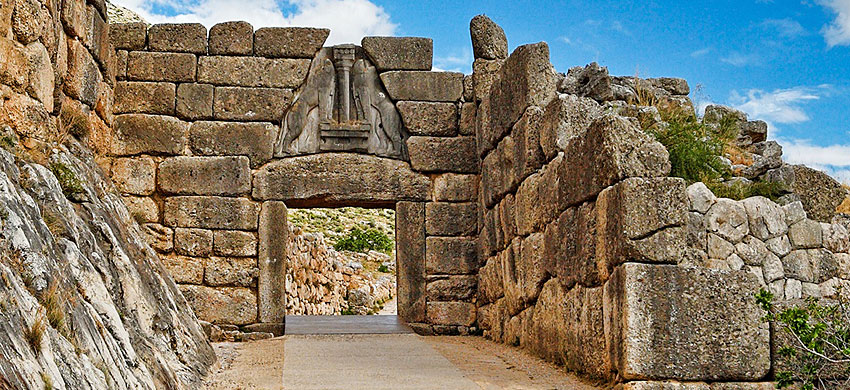
The Peloponnese is the most famous region of mainland Greece, thanks to the glorious cities of the past of which today we can admire the ruins. We are talking about Olympia, cradle of the Olympic Games, Mycenae, kingdom of Agamemnon, and Sparta, eternal city-state rival of Athens: three indelible names in the collective memory, linked to stories and legends that are the foundation of European and Mediterranean culture.
Although formally it is still considered a peninsula, the Peloponnese has become an island with the cutting of the Corinth Canal at the end of the nineteenth century. It can also be reached by ferry thanks to the presence of the port of Patras and it is not necessary to move elsewhere to make a memorable vacation: the region offers an incredible quantity and variety of things to see and do.
Impossible to summarize in a paragraph the attractions not to be missed in the Peloponnese: this region concentrates all the best of a vacation in Greece. In addition to the places of myth (and here must be added Epidaurus with its magnificent theater), in Peloponnese you can visit remote and traditional areas such as the Mani Peninsula, spectacular gorges, Byzantine ruins, mountain landscapes. You can also experience the bucolic idyll of the Arcadia region.
Needless to say, for those who want to have a beach vacation there is a wide choice of locations Kalamata is perfect for those who want to combine beautiful sea and urban atmosphere, Nafplio is more romantic; however the most beautiful beach of Peloponnese is Voidokilia, 7 km from Pylos.
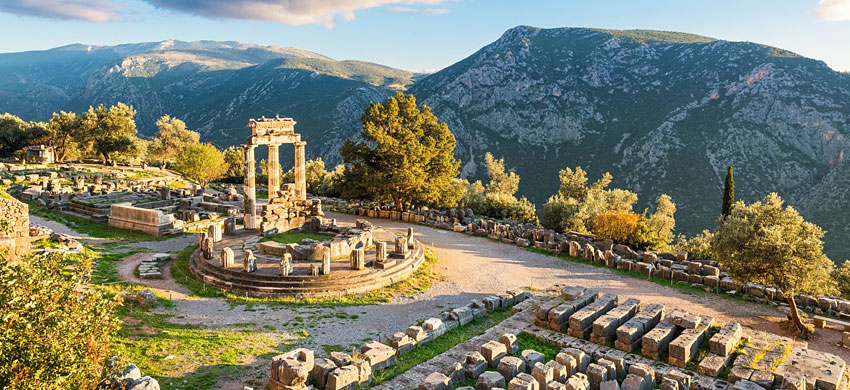
Central Greece is one of the most loved by history lovers. It is the geographical heart of modern Greece, but it is also the symbolic heart of ancient Greece: in this region there is in fact Delphi, the city of the famous oracle, which for the ancients represented the center of the world and the place where humans could enter into direct communication with the gods.
Other places linked to myth are Mount Parnassus, now a popular destination for ski enthusiasts, and Ancient Thebes.
The seaside towns of the region, overlooking the Gulf of Corinth or the Aegean Sea, are local tourism destinations to consider if you do not like very touristy seaside resorts: mark the names of Galaxidi, Nafpaktos, Messolongi. The equivalent for those who love nature and trekking is the National Park of Iti.

Thessaly needed only one attraction to become one of the most visited areas of mainland Greece. It is in this small central-eastern region that you will find Meteora, six fascinating ancient monasteries perched atop pinnacles of sandstone rock.
You can visit them with a day trip from Athens, but it is a long journey and does not allow you to fully enjoy the magic of this place: better to stop and sleep a night or more in Kalambaka or Kastraki, the two towns that arise at the foot of the rocky mountains on which stand the monasteries.
If you want to take a beach vacation in Thessaly the destination for you is the Pelion Peninsula, a lush stretch of coastline along which you will find beaches and coves that have nothing to envy to more famous seaside resorts Volos is the city from which to start exploring the peninsula.
If you prefer the mountains you can climb to the top of the peak symbol of Greece, the mythical Mount Olympus.

Many tourists pass through Epirus but few stay: they arrive at the port of Igoumenitsa and leave immediately for other destinations. It is a pity: this small region in the northwest of Greece hides treasures not to be missed.
Ioannina, a pretty and lively university town nestled along the shores of a lake, is well worth a stop. Stay at least one night to have the time to visit the city center, take a boat trip to the island of To Nisi and enjoy the evening in one of the many bars in the center.
An unmissable attraction for nature lovers and hikers is the Zagorohoria, an enchanting mountainous area of gorges (including the spectacular Vikos Gorge), forests and villages where time seems to stand still.
Epirus is to be considered also by those who want to have a sea vacation far from the most famous seaside resorts of Greece Parga is a very valid option: beautiful beaches, splendid sea, romantic historical center and hotels with a good quality/price ratio.
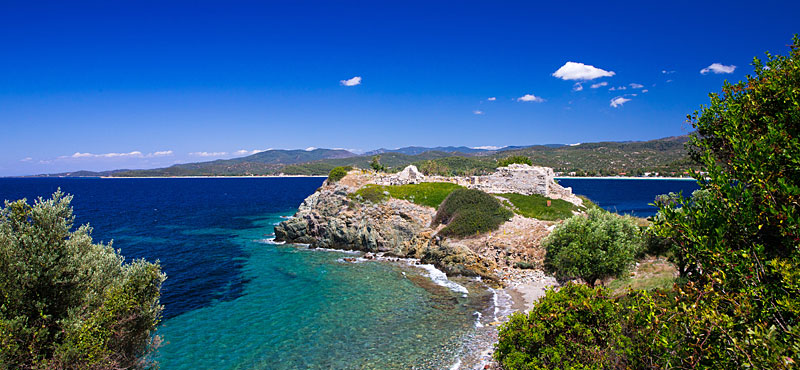
The Greek region of Macedonia is often confused with North Macedonia, which is instead an independent republic, and with historical Macedonia, a large territory today divided between six different nations.
Greek Macedonia is therefore a portion of historical Macedonia. It is a very large region, which occupies a large part of northern Greece and includes within it completely different realities… which means that Macedonia is a destination suitable for many different types of vacations.
Perfect for an unusual city-break is Thessaloniki, the second city of Greece. Although less fascinating than Athens, as the capital offers a quantity of museums, stores and clubs enough to fill with satisfaction two or three days. There are city beaches within easy reach, certainly not the most beautiful in Greece but suitable for a refreshing dip after visiting museums.
For a seaside vacation, study well the map of the Chalkidiki Peninsula it is a peninsula formed in turn by three peninsulas (Kassandra, Sithonia and Mount Athos), three fingers that slip into the northern Aegean. Along the 500 km of coastline of this area there are enchanting beaches and bays, all to be discovered: there is something for all tastes, from crowded party beach to solitary coves where no one will come to disturb you.
If you want to combine sea, mountains and myth in one vacation, base yourself in Litohoro, a small town located along the northeast coast of mainland Greece, close to the eastern slopes of Olympus.

La Thrace is the northeastern outpost of mainland Greece: nestled between Bulgaria and Turkey, it is a remote area where you can breathe a border atmosphere. Few tourists come here, not because of the distance, but because Thrace does not correspond to the image of postcard Greece.
The multicultural identity of this region has been shaped over the centuries by the succession of empires and migratory flows that have left clear traces of different peoples and cultures: here churches coexist with mosques, moussaka with kebabs, the Greek language with Turkish and Pomak (Bulgarian dialect).
It is a very fascinating destination, recommended to curious travelers in search of unusual destinations and to those who love multicultural suggestions. There is no lack of attractions.
The cities are the best destinations to fully enjoy the cultural melting pot that characterizes the region: you can stop in Alexandroupoli, the main city located along the coast, or in Xanthi, Orestiada or Komotini.
The real wonder of Thrace, however, still almost unknown to tourists, are its natural landscapes. The Evros Delta and the Dadia-Lefkimi-Soufli National Park are two must-see destinations for nature trails and birdwatching enthusiasts. Don’t miss the Rhodope Mountains if you’re looking for off-the-beaten-path trekking or adrenaline-filled days of rafting and kayaking.

